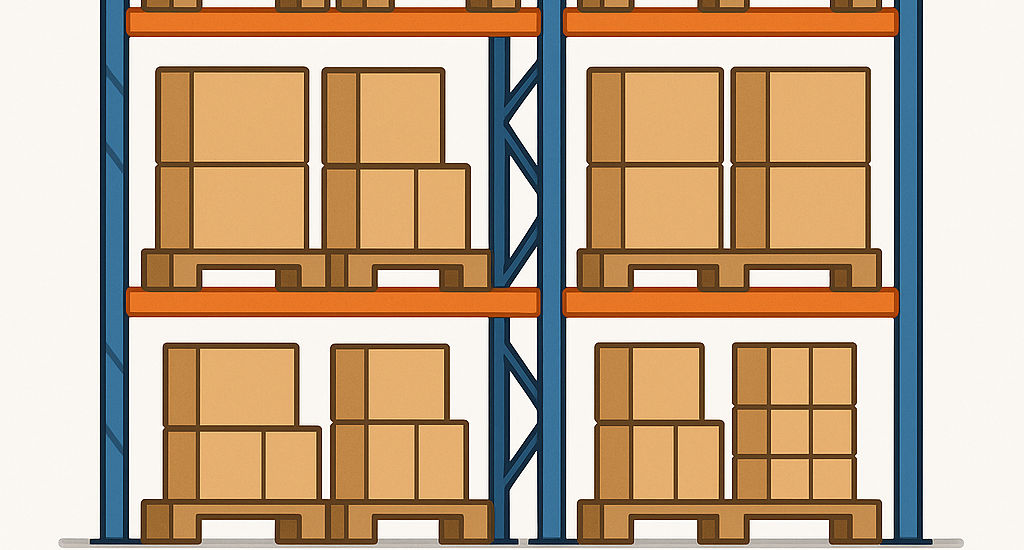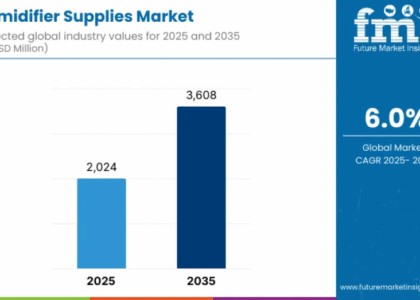The global warehouse racking market is poised for significant growth, projected to rise from USD 8,043 million in 2025 to USD 11,128.1 million by 2035, at a CAGR of 3.3%. This upward trend is driven by the growing need for efficient inventory storage, rapid expansion in e-commerce, and accelerated adoption of warehouse automation.
Warehouse racking systems are vital in streamlining operations and optimizing space within modern warehouses. As supply chain efficiency becomes paramount, these systems provide vertical storage solutions that help businesses handle increased SKU volumes with ease. Retail, logistics, manufacturing, food & beverage, and pharmaceutical sectors are increasingly integrating these racking solutions to improve operational throughput and inventory accuracy.
North America will lead the global warehouse racking market, fueled by a thriving e-commerce ecosystem, the growing prevalence of robotics and automation in warehouses, and rising investment in cold chain logistics. The United States and Canada are at the forefront, backed by strong demand for smart storage infrastructure and rising need for cold storage in food and pharmaceutical distribution.
Moreover, the demand for multi-tier racking systems, increased adoption of automated storage and retrieval systems (AS/RS), and omnichannel fulfillment trends are boosting market traction globally. Companies are striving to meet diverse distribution needs while ensuring real-time visibility and scalability.
Gain Valuable Insights from Industry Experts to Shape Your Growth Strategies. Access our Sample Report Now:
Report Coverage & Deliverables
This market report offers comprehensive insights into current and future trends, detailed regional analysis, competitive landscape, and market segmentation by racking types, industries, and technologies. It includes revenue forecasts, growth drivers, key restraints, technological innovations, and profiles of top market players.
Key Factors Shaping Market Dynamics
The market is being shaped by surging e-commerce fulfillment demands, the need for flexible and modular storage, integration of automation, and the shift toward sustainable and cost-effective warehouse operations.
High Initial Investment Costs and Space Constraints
Despite its benefits, the warehouse racking market faces challenges in the form of high upfront investment costs and the need for significant capital to deploy advanced AS/RS and robotic integration. These costs can deter small and medium-sized enterprises from upgrading traditional warehousing systems.
Another key concern is space availability, especially in densely populated urban areas where real estate costs are high. Designing racking systems that align with ceiling height, zoning regulations, and future scalability often demands significant planning and specialized expertise.
AI-Driven Warehouse Optimization, AS/RS Integration, and Sustainable Racking
With the rise of AI and IoT, warehouse operators are now leveraging AI-powered analytics and smart sensors to track inventory in real-time and forecast storage needs more accurately. These advancements are reducing downtime, improving order picking accuracy, and minimizing waste.
Sustainability has also become a core focus. Companies are shifting to eco-friendly racking materials, energy-efficient automation systems, and recyclable modular components. The integration of AS/RS not only improves space utilization but also cuts operational costs and carbon emissions.
Compliance with Basic Safety Standards and Industry Regulations
Manufacturers and warehouse operators must adhere to stringent safety norms and industry regulations, such as those laid out by OSHA, ANSI, and FEM, to prevent workplace hazards. This includes maintaining structural integrity of racking systems and implementing proper load distribution.
Failure to comply can lead to operational shutdowns or costly penalties, especially in highly regulated industries like pharmaceuticals and food. Therefore, there is a growing demand for racking systems that are pre-certified and easy to inspect.
“The rise in AI integration, e-commerce, and cold chain demand is reshaping the warehouse racking market into a smarter, scalable ecosystem.”
Key Takeaways
The warehouse racking market is transitioning from static storage structures to automated, intelligent, and sustainable systems. Growth is driven by e-commerce proliferation, 3PL partnerships, cold chain logistics, and increasing investments in robotics. Modular and AS/RS-integrated racking is no longer a luxury, but a necessity for high-speed, omnichannel fulfillment operations.
Introduction of Basic Automation and Data Tracking Systems
Basic automation such as barcode scanning, RFID tagging, and conveyor integration is being adopted at scale. These systems support seamless inventory visibility and reduce human error.
Additionally, data tracking and warehouse management systems (WMS) are helping to monitor real-time racking utilization and performance, ensuring predictive maintenance and reducing downtime.
Predominantly Utilized in Retail and Manufacturing Sectors
Retailers rely on dynamic racking systems to support omnichannel operations, fast replenishment, and seasonal demand surges. Vertical and mobile racking systems are being widely adopted in this segment.
Meanwhile, the manufacturing sector uses warehouse racking for raw material storage, work-in-progress inventories, and parts segregation. Efficiency, accessibility, and safety are key performance metrics here.
Warehouse Racking Market Key Players
Key players leading the global market include:
- Kardex Group – Offers advanced AS/RS and intralogistics solutions for smart warehousing.
- Mecalux, S.A. – Known for its global presence and high-density pallet racking systems.
- Daifuku Co., Ltd. – A major innovator in material handling systems and warehouse automation.
- SSI SCHAEFER Group – Provides integrated storage solutions tailored for e-commerce and retail.
- Interroll Group – Specializes in modular conveyor and storage technologies, ideal for scalable warehousing.
Limited Integration of Smart Technologies
While the industry is advancing, many small and mid-sized warehouses still lag behind in adopting AI and IoT-based smart technologies. Legacy infrastructure and budget constraints slow the digital transition.
This limited integration poses a challenge to real-time inventory accuracy and labor efficiency, underscoring the need for government and private support to digitize warehousing infrastructure.
Regional Analysis
- North America: Leads with a strong e-commerce base, 3PLs, and automation investments.
- Latin America: Growing interest in automated storage but limited by funding and infrastructure.
- Western Europe: High adoption of smart racking, especially in Germany and the UK.
- Eastern Europe: Gradual modernization driven by manufacturing and cross-border logistics.
- East Asia: Robust growth due to China and Japan’s emphasis on smart warehouses.
- South Asia & Pacific: Emerging market for e-commerce storage needs, led by India and Australia.
- Middle East & Africa: Nascent but growing, driven by logistics hubs and urban development.
Latest Heavy Engineering Solutions Reports:
Warehouse Racking Market Segmentation
By Product Type:
- Roll Formed Selective Pallet Rack
- Structural Selective Pallet Rack
- Push Back Pallet Rack
- Drive in Pallet Rack
By Application:
- Automotive
- Food & Beverage
- Retail
- Packaging
- Manufacturing
Explore FMI’s Extensive Coverage on Industrial Automation Domain:
The fire hydrant system market is projected to reach approximately USD 5 billion by 2035, at a CAGR of 4.8%.
The Composting Equipment industry valuation is expected to grow at a steady rate, with an estimated value of USD 133.3 million in 2025, to reach approximately USD 189.9 million by 2035, growing at a CAGR of 3.6%.
About Future Market Insights (FMI)
Future Market Insights (FMI) is a leading provider of market intelligence and consulting services, serving clients in over 150 countries. FMI is headquartered in Dubai and has delivery centers in the United Kingdom, the United States, and India. FMI’s latest market research reports and industry analysis helps businesses navigate challenges and make critical decisions with confidence and clarity amidst breakneck competition. Our customized and syndicated market research reports deliver actionable insights that drive sustainable growth. A team of expert-led analysts at FMI continuously tracks emerging trends and events in a broad range of industries to ensure that our clients prepare for the evolving needs of their consumers.
Join us as we commemorate 10 years of delivering trusted market insights. Reflecting on a decade of achievements, we continue to lead with integrity, innovation, and expertise.
Contact Us:
Future Market Insights Inc.
Christiana Corporate, 200 Continental Drive,
Suite 401, Newark, Delaware – 19713, USA
T: +1-347-918-3531
For Sales Enquiries: sales@futuremarketinsights.com
Website: https://www.futuremarketinsights.com
LinkedIn| Twitter| Blogs | YouTube






